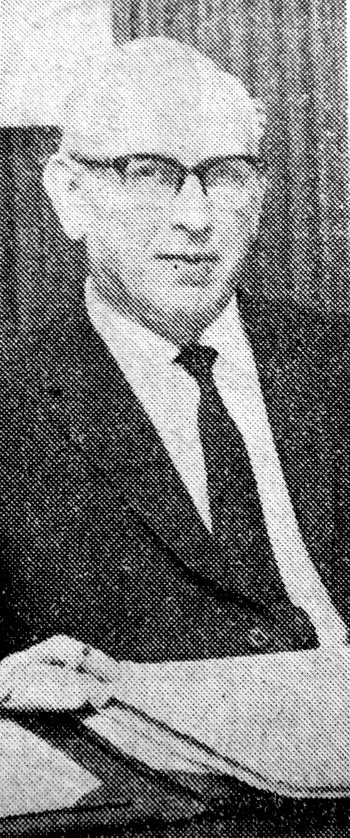South Yorkshire Times, January 10, 1970
Former Mexborough Man Pioneered Research into Coal Blending Plant

A former Mexborough resident Mr. Malcolm Edington, one of Britain’s leading specialists in coke production, took up a new national appointment on January 5th as consultant to the National Coal Board’s Coal Products Division. He initiated research work into the push-button coal blending plan — first of its kind in the country, which will be opened in Co. Durham this month by Lord Robens.
Mr. Edington, who now lives at 18, King Edward Road, Tynemouth has spent over 40 years in the coking industry. Both he and Mrs. Edington (nee Miss Winifred Greenway) were educated at Mexborough Grammar School and Sheffield University, Mrs. Edington was born in Mexborough and lived there for 25 years and Mr. Edington at one time resided In Conisbrough.
As A Chemist
Mr. Edington started his career as a chemist at Manvers Main Collieries and later joined Londonderry Collieries. He was engaged on the construction of new coking plants in England and Wales before being appointed manager of Bankfoot Cokeworks, Crook, County Durham., in 1942. Ten years later he became general manager of the carbonisation department of Durham Divisional Coal Board.
He became the carbonisation director in 1955. He was appointed Northern Region general manager when the Coal Products Division of the NC was formed six years ago, with responsibility for all activities, in the North of England and Scotland.
National President
When he was national president of the Coke Oven Managers’ Association in 1957, Mr. Edington was a member of a six-man delegation from the British Coke Research Association which investigated the United States Coking Industry
The 300,000 Plant
The push-button coal blending plant, will keep County Durham ahead as the main supplier of prime quality foundry coke to British industry. The £300,000 project at Lambton Coking Plant, near Chester-le-Street, follows a significant breakthrough in blending techniques by research teams from the coking industry.
They found that by employing a highly specialised blending process, previously unsuitable East Durham coal could be used in quantity to produce top class coke to feed the foundries of the iron and steel industries,
The plant has been developed In the face of a world shortage of coking coal and at a time when the traditional source—the famous 301-rank seams of West Durham is rapidly becoming exhausted.
Fully Operational
It becomes fully operational early in the New Year and when the opening ceremony is performed by Lord Robens on Tuesday, January 13th, many of the Board’s top customers will be able to watch the new process for themselves.
Mr. Edington commented: “The plant has been building up output over the past few’ months and the product is so successful that the Board are expected to apply the same techniques elsewhere.”
Coal Products engineers and scientists based at Team Valley Gateshead conducted the research in conjunction with the British Coke Research Association, the British Cast Iron Research Association, and the N.C.B. Coal Research Establishment.
A Replacement
With Durham providing more than half of the one million tons of foundry coke used in Britain each year, their brief was to find a replacement for the dwindling reserves of coking coals in the west of the’ County.
This was necessary in order to maintain vital supplies to more than 2,000 foundries including essential users such as the car and agricultural industries, the railways and domestic appliance manufacturers.
Additional test ovens were built at Norwood coking plant for small scale tests using different types of East Durham coals and additives. The results were analysed by NCB computer and an optimum quality blend was selected for large scale trials which began at Lambton in October, 1968.
These proved so successful that the new, electronically controlled blending plant was commissioned. It process 300,000 tons of coal a year from Wearmouth, Herrington and Houghton collieries, producing 200,000 tons of high-grade coke.
Substantial Reserves
Mr. Edington said: “Although East Durham has substantial reserves of good coking coal, it is generally more volatile than that in West Durham but by accurately controlled blending a metallurgical coke can now be produced equal in quality to that made from West Durham coal.”
The plant has 20 blending bunkers each with a capacity of 200 tons and is capable of handling five different streams of components.
In the process, coal is blended with very small proportions of finely crushed coke breeze and low volatile Welsh coal which upgrades the local coal and improves its coking properties. All the component are automatically sampled and tested for quality before blending starts.